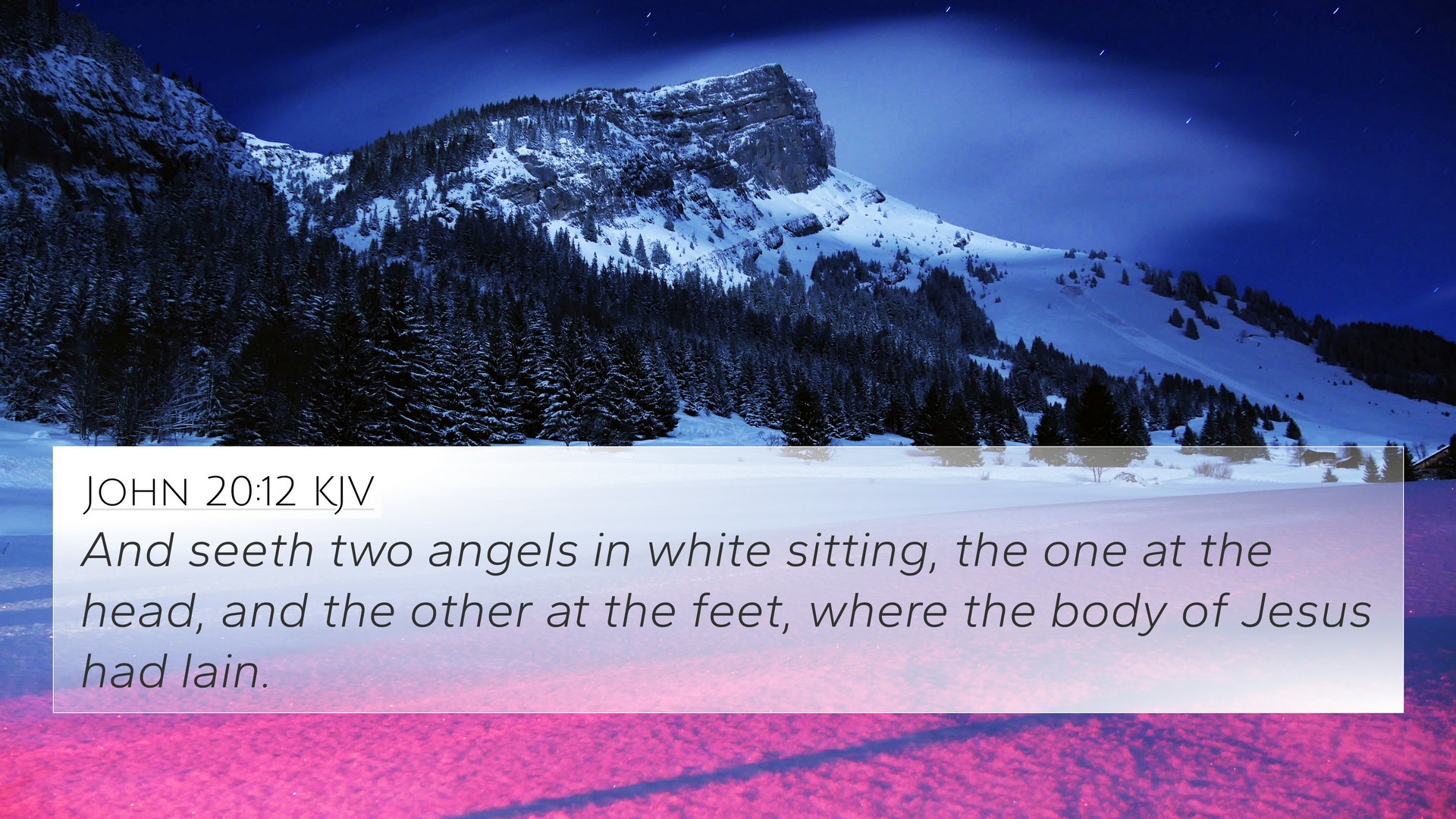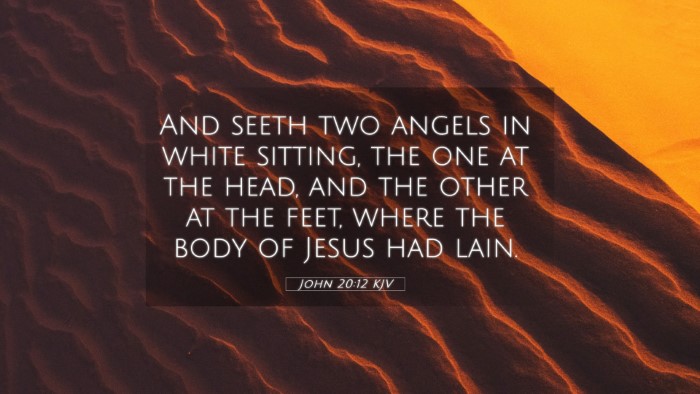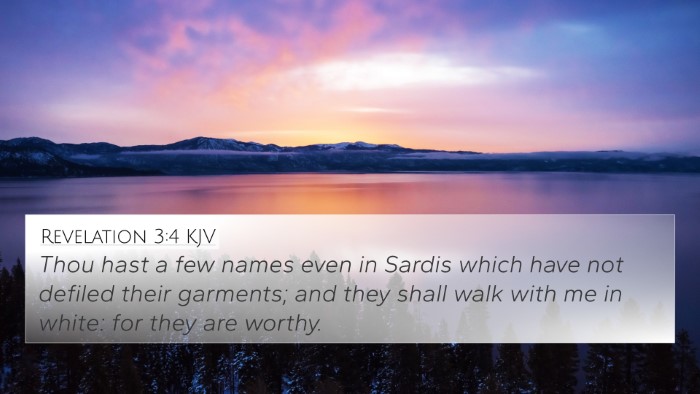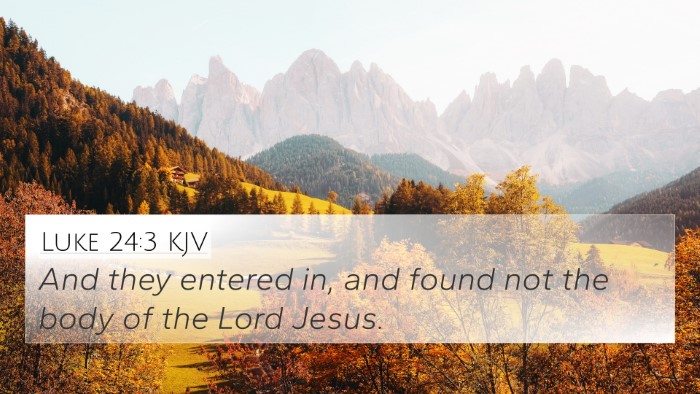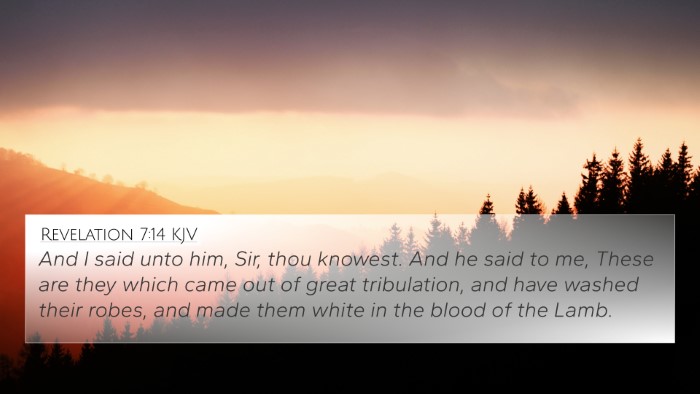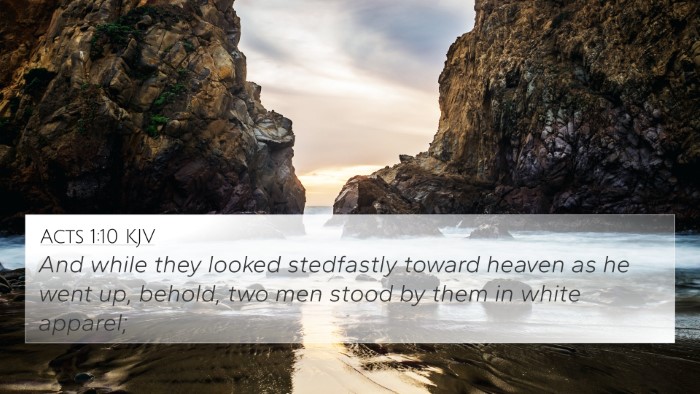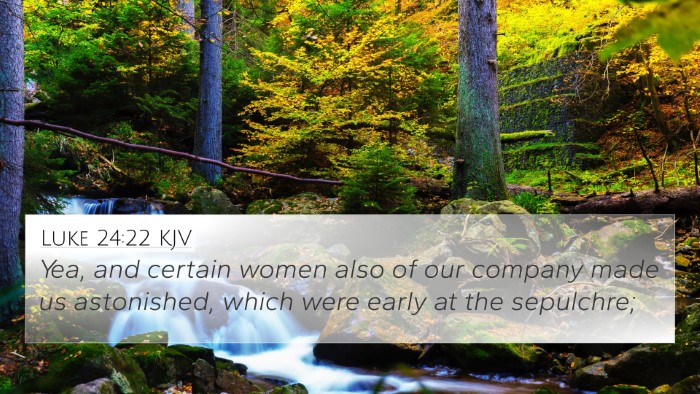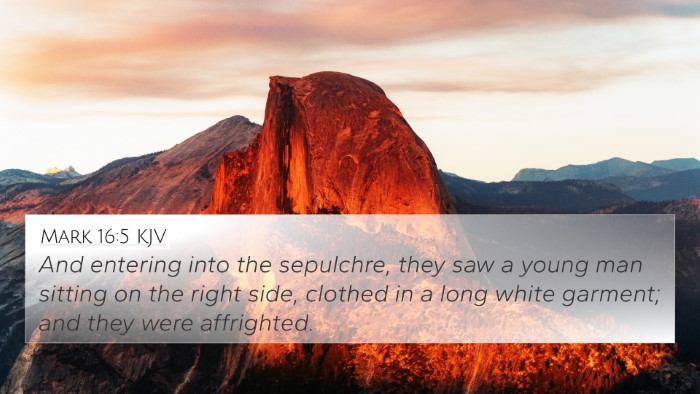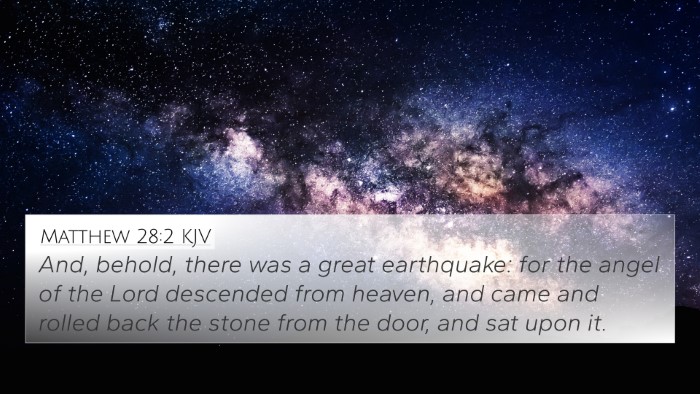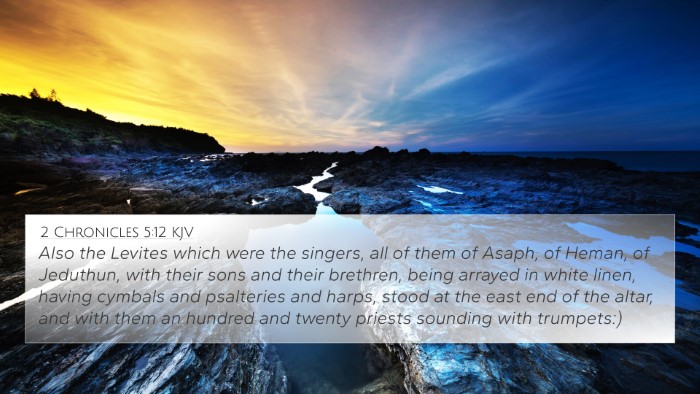Understanding John 20:12
The verse John 20:12 reads: "And she saw two angels in white sitting, the one at the head, and the other at the feet, where the body of Jesus had lain." This moment occurs after Mary Magdalene comes to the tomb of Jesus and discovers that He is not there. The presence of the angels is significant and invites a deeper examination of its implications.
Verse Context
In this part of the Gospel of John, we witness the aftermath of Jesus' crucifixion and burial. Mary Magdalene, one of Jesus' most devoted followers, arrives at the tomb to find it empty. The scene is charged with emotion, highlighting the themes of loss, resurrection, and divine revelation.
Commentary Insights
Matthew Henry's Commentary
Matthew Henry emphasizes the miraculous nature of the resurrection and how it is heralded by angelic beings. The angels' presence is a divine affirmation of Jesus' victory over death and a comfort to those who mourn. Henry argues that their positioning—one at the head and one at the feet—suggests a completion of a divine work, symbolizing both the promise of resurrection and God’s continual guidance.
Albert Barnes' Commentary
Albert Barnes provides insight into the identity of these angels, suggesting they symbolize God's confirmation of Jesus' resurrection. He draws parallels to Old Testament appearances of angels who often brought messages of hope and reassurance. He highlights that their location in the tomb indicates that Christ's death has been transformed into life, reinforcing the theme of hope and renewal in the Christian faith.
Adam Clarke's Commentary
Adam Clarke delves into the symbolism behind Mary’s encounter with the angels. He notes the importance of recognizing their dual positioning, which reflects both judgment and mercy. Clarke encourages readers to understand this interaction as part of a broader narrative about divine intervention in human history and the fulfillment of prophecies concerning the Messiah.
Key Themes from John 20:12
- Resurrection: The empty tomb serves as a powerful symbol of resurrection, echoing themes found throughout the New Testament.
- Divine Presence: The appearance of the angels highlights God's continued presence and reassurance amidst despair.
- Hope and Comfort: This verse is a reminder of the hope that the resurrection brings to believers.
- Fulfillment of Prophecy: The presence of angels recalling Old Testament precedents underscores the continuity of God's plan.
Bible Verse Cross-References
This verse relates to several other scriptures that enhance its understanding. Here are some notable cross-references:
- Matthew 28:2-4 - The role of angels at the resurrection.
- Luke 24:4-6 - Encounters of other witnesses with angels at the tomb.
- John 20:13 - Mary's conversation with the angels about her missing Lord.
- Acts 1:10 - The appearance of angels at Jesus' ascension.
- Revelation 1:18 - Jesus proclaiming His victory over death.
- 1 Corinthians 15:55-57 - The significance of resurrection in Christian doctrine.
- Isaiah 25:8 - Prophetic reference towards death being swallowed in victory.
Thematic Connections between Bible Verses
When analyzing the connections between Bible verses, it is crucial to look for thematic links that inform our interpretation. The themes of resurrection, divine assurance, and fulfillment of promises resonate throughout both the Old and New Testaments:
- Linking Biblical Texts: From Old Testament prophecies to New Testament revelations, Scripture consistently points to the restoration of life through Christ.
- Bible Verse Parallels: The parallels between resurrection narratives across the Gospels highlight a unified message of hope.
- Inter-Biblical Dialogue: John 20:12 engages with prior texts that discuss angels and resurrection, prompting a deeper exploration of these themes in progressive revelation.
Practical Tools for Bible Cross-Referencing
For those looking to delve deeper into Scripture, several tools exist to aid in cross-referencing and thematic study:
- Bible Concordance: A helpful resource for identifying connections through specific words and phrases.
- Bible Cross-Reference Guide: A systematic way to explore verses that relate to one another.
- Cross-Referencing Bible Study Methods: Various methods can be employed, including thematic studies and verse-by-verse analysis.
- Bible Chain References: A method for linking verses chronologically, enhancing understanding of Biblical narrative flow.
Conclusion
In summary, John 20:12 not only provides a snapshot of an incredible moment in time but also invites believers to explore the rich tapestry of Scripture through various lenses of interpretation. Understanding the connections between Bible verses through cross-referencing aids in grasping the full significance of the resurrection and encourages a more profound engagement with faith.
